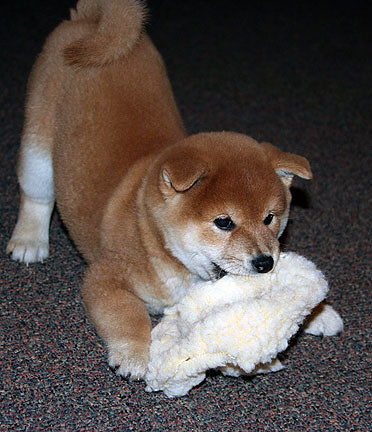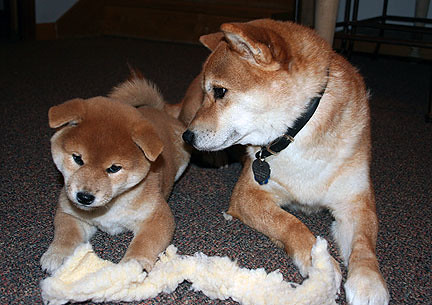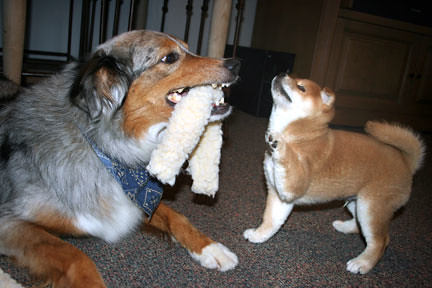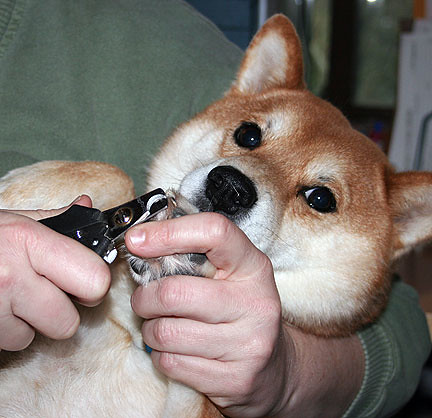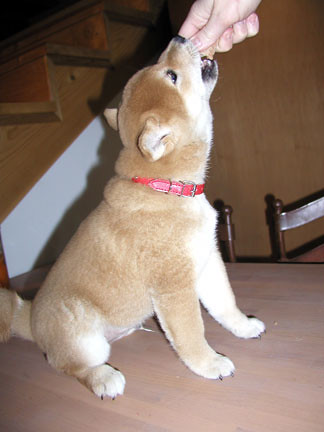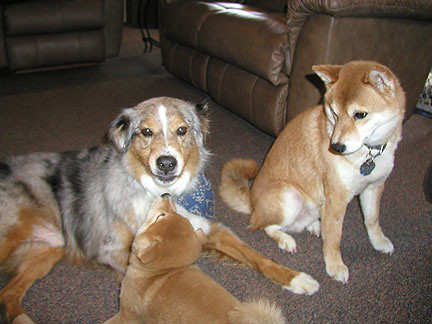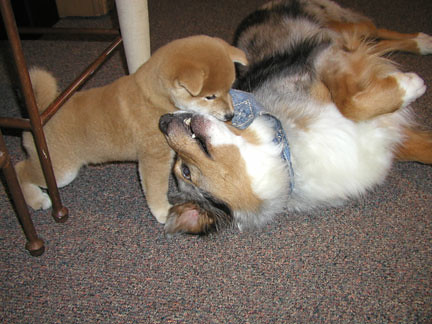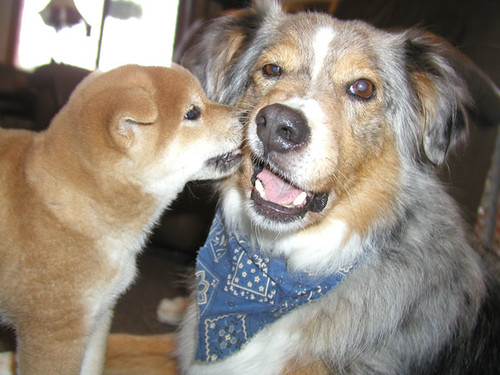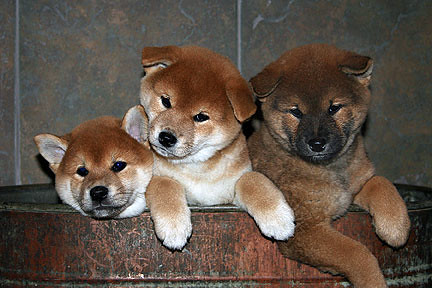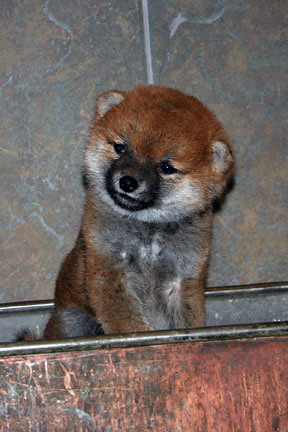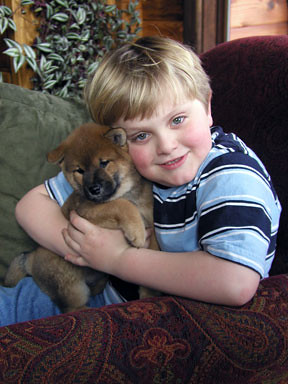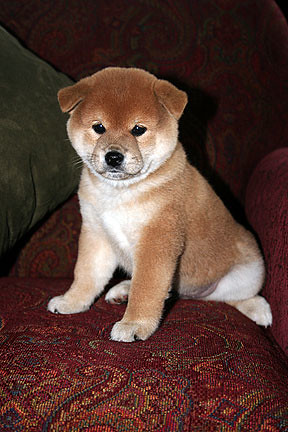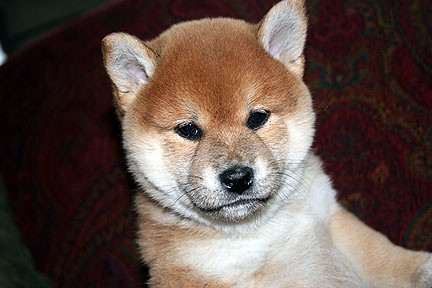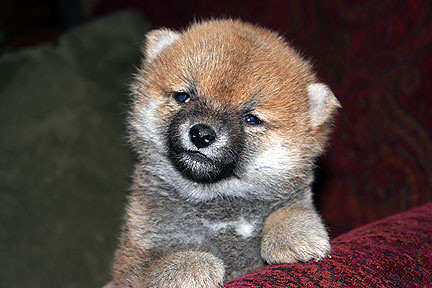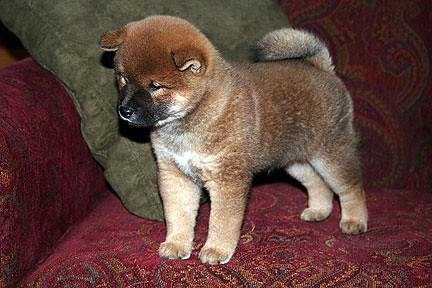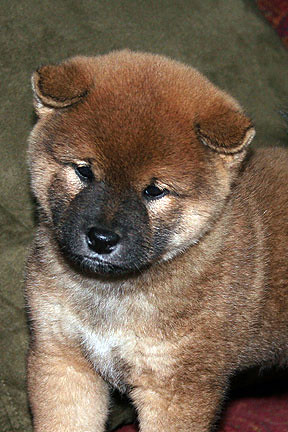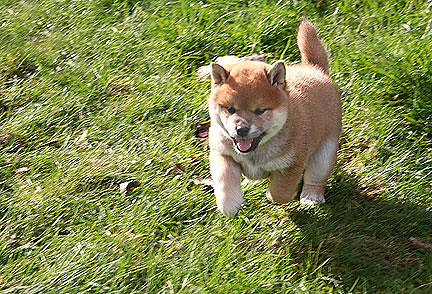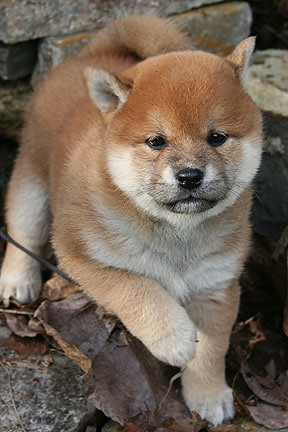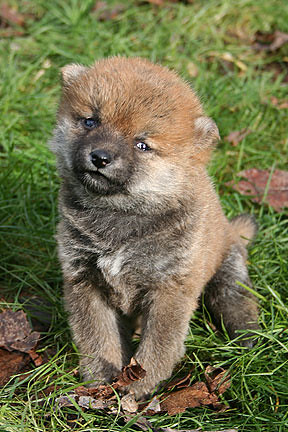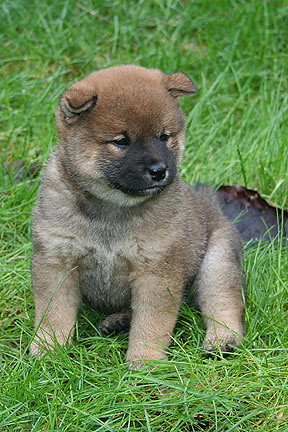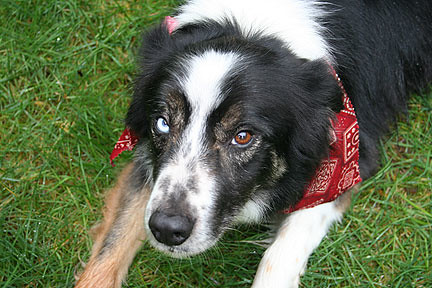Since we're talking about puppies, I thought I'd repost my blog on crate training:
I can't believe how many times I hear people say, "putting dogs in a crate is cruel, and I just won't do it". And my response is always to each your own, but don't come asking me how to fix your problems if you won't try my solution. Crating dogs is only cruel if you leave them in there for long periods of time, and allow them to soil in their crate. If you crate train correctly, it is not cruel to the dog, and may relieve your stress at the same time.
Before domestication, dogs lived in dens. They used their dens for safety and protection. Naturally they kept their dens clean by soiling outside their living area. Crate training is based on the concept that puppies will do all they can to avoid soiling their living area.
Steps to crate training:
1. When buying a crate, make sure it is the correct size for your dog. For a puppy, an adjustable crate is the best. For an adult dog or a small dog puppy, you should size the crate so they can stand up in it and can turn around easily. If the crate is too big, your puppy may find a corner of it to potty in, and it will make housebreaking more difficult.
2. When you have the puppy and the crate, begin by placing a soft towel in the bottom of the crate for it to sleep on. Make sure that whatever you put in there is washable because no matter how diligent you are about taking a puppy out to potty, there will be accidents. You may also want to put a shirt that you have worn (and that you don’t care that it gets chewed on) in the crate to help comfort the puppy for the first few weeks.
3. Very young puppies need to potty every hour. Under a year old, they do not have full bladder control. To begin teaching them to go outside, set an alarm for every hour and carry them outside to the place you want them to potty. As they are looking for a place to go, use a word or phrase that means “go outside and potty” so they get used to hearing it. When they potty, praise them with a high-pitched voice and play with them with a toy. As the puppy gets older you can stretch this time to an hour, then two hours, then three (if necessary). At night while they are sleeping, you can stretch this 2-3 hours. They puppy will usually tell YOU when they are desperate and need to go.
4. After the puppy has gone potty, it is OK to bring them back in the house to play. Keep a close eye on them for sniffing and any signs that they may need to go back outside. If you can’t supervise the puppy, put it back in its crate. The idea is that you don’t want to give the puppy the opportunity to soil in the house until they absolutely understand that outdoors is the place to go.
5. On the occasions that you can’t take the puppy outside every hour. Never confine your puppy to its crate for more than 3 hours at one time. Like I said earlier, young puppies don’t have strong bladder control and they don’t like soiling their crate. After a year old, it is not uncommon for a dog to be able to go 8 hours between potty breaks, but don’t expect a puppy under a year to be able to do that.
6. Never scold your dog for mistakes, especially in young dogs, it is not their fault. It is the owners fault for not supervising them close enough. And not responding to the clues the dog is giving that it needs to go outside. As an owner, start watching for those clues. Most puppies will want to go outside after they wake up, after they eat, after playing and throughout the day at least every 3 hours. Watch for sniffing, running to the door, and a boost of energy followed by a pause. Always take the puppy outside after eating and sleeping.
Getting your puppy used to a crate:
Although dogs are den animals, your puppy will want to be with you instead of being alone. It has spent it’s entire life surrounded by litter mates, it’s mother and now you and your family. It does not want to be alone. Here are some tips to make the crate transition easier...
1. Before you put the puppy in it’s crate, take it out to potty. Then give it a good amount of exercise, so it is tired. If you put a puppy back in it’s crate when it’s wide awake and wanting to play, you’ll never hear the end of it...
2. When you put the puppy in it’s crate and it immediately starts to cry, ignore it. The puppy wants you to come back and let it out. If you break down and run in there, you’ve given in to the puppy and the next time it will cry even louder and longer. Don’t yell at the puppy either. Just go ahead with your daily activities and ignore the cries. Eventually they will stop.
3. If the puppy has been quiet in the crate for awhile and then you hear it crying, it may need to go potty. Try to get to the puppy before it starts crying for very long. Don’t wait it out to see if it will stop. If you do that, then all you’ve done is taught it that if it cries long enough, eventually you’ll come get it. This is especially important at night. Most people don’t want to set an alarm at night to take the puppy outside on a regular basis, so they wait until they hear the puppy crying. The quicker you get to the puppy and get it outside, the quicker you’ll get back to sleep. At night, after the puppy goes potty, it will most likely want to play. You have two choices, play with the puppy (consistent to what you are doing during the day) and wear it out before putting it back in the crate, or putting it back in wide awake and listening to it cry. Either way you’re not going back to sleep until it does!
4. The crate should be the puppy’s house and safety area. The puppy should eventually want to go in there on it’s own when it’s tired and wants to sleep. Never confine a puppy in crate for punishment. And don’t leave it in it’s crate for long periods of time. Puppies need exercise and interaction with your family to become well-rounded dogs.
